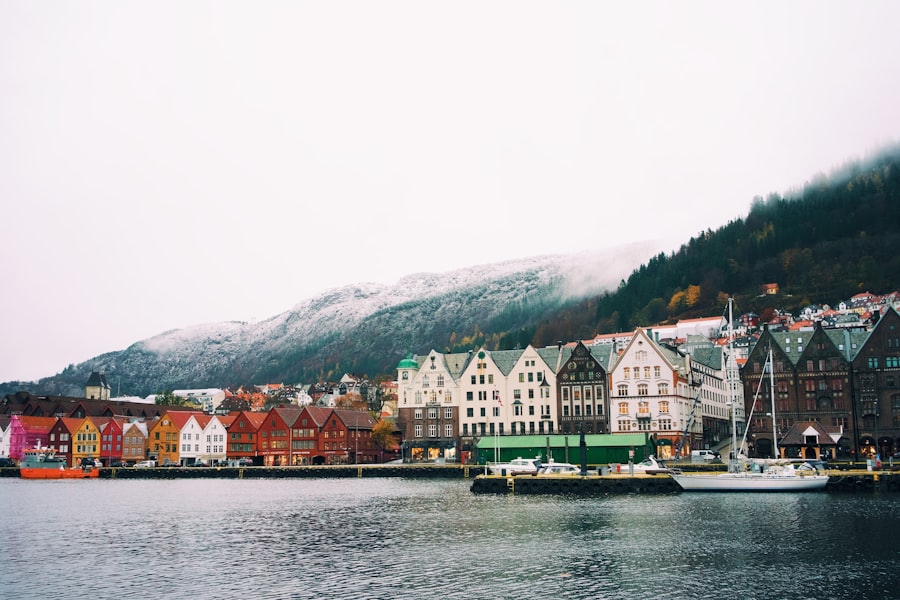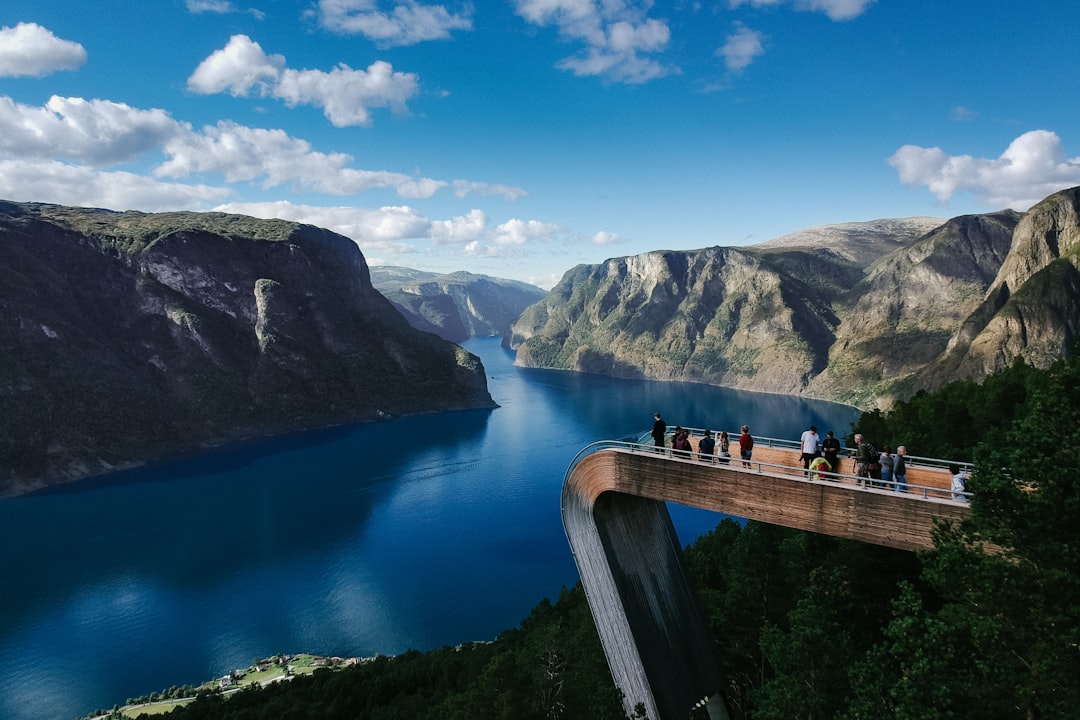Norway boasts a rich cycling culture that is deeply intertwined with its stunning natural landscapes and commitment to sustainability. Cycling is not merely a mode of transport; it is a lifestyle choice embraced by many Norwegians. The country’s extensive network of cycling paths and trails, coupled with its breathtaking scenery, makes it an ideal location for both casual riders and serious cyclists.
In urban areas, cycling is increasingly seen as a practical alternative to driving, particularly in cities like Oslo, where efforts to reduce traffic congestion and pollution have led to the development of dedicated bike lanes and bike-sharing schemes. Moreover, the Norwegian government actively promotes cycling as a healthy and environmentally friendly means of transport. Initiatives such as the “Bicycle Strategy” aim to increase the number of cyclists on the roads by improving infrastructure and encouraging more people to take up cycling.
This cultural shift towards cycling is evident in the growing number of cycling events, clubs, and community gatherings that celebrate this beloved pastime. As a result, cycling in Norway is not just about getting from point A to point B; it is about embracing a way of life that values health, community, and the great outdoors. Book your 1-hour strategy session with Norway Relocation Group.
Summary
- Cycling is a deeply ingrained part of Norwegian culture, with a strong emphasis on sustainability and outdoor activities.
- Electric bikes are increasingly popular in Norway, especially for commuting and tackling hilly terrain.
- When choosing a bicycle, it’s important to consider the right size and fit for your body to ensure comfort and safety.
- Familiarize yourself with Norwegian bicycle laws, including rules for lights, reflectors, and helmets, to stay safe and legal on the road.
- Look for bicycles at local bike shops, online marketplaces, or second-hand stores, and consider budgeting for accessories and maintenance costs.
Types of Bicycles Popular in Norway
When it comes to choosing a bicycle in Norway, there are several types that cater to different needs and preferences. One of the most popular choices among urban cyclists is the city bike, designed for comfort and practicality. These bikes typically feature a sturdy frame, an upright riding position, and accessories such as racks and fenders, making them ideal for commuting and running errands.
Many city bikes are also equipped with gears to tackle the hilly terrain that characterises much of Norway. For those who prefer off-road adventures, mountain bikes are a popular option. With their robust construction and wide tyres, mountain bikes are perfect for navigating Norway’s rugged trails and varied landscapes.
Additionally, electric bikes have gained significant traction in recent years, offering an eco-friendly alternative that allows riders to cover longer distances with less effort. This has made cycling more accessible to a broader audience, including those who may not have considered it before due to physical limitations or concerns about stamina.
Finding the Right Size and Fit

Selecting the right size and fit for your bicycle is crucial for both comfort and performance. A well-fitted bike can significantly enhance your riding experience, reducing the risk of injury and fatigue. To determine the appropriate size, it is essential to consider your height and inseam measurement.
Most bicycle manufacturers provide sizing charts that can guide you in selecting the right frame size based on these measurements. Once you have identified the correct size, it is equally important to adjust the bike to suit your individual needs. This includes setting the saddle height so that your legs can extend comfortably while pedalling and adjusting the handlebars for optimal reach.
Many local bike shops in Norway offer professional fitting services, which can be invaluable for ensuring that your bike is tailored to your body. Taking the time to find the right fit will not only enhance your comfort but also improve your overall cycling performance.
Navigating the Norwegian Bicycle Laws
Understanding the laws governing cycling in Norway is essential for any cyclist looking to explore the country’s roads and trails safely. Norway has specific regulations that cyclists must adhere to, which are designed to ensure safety for both cyclists and motorists. For instance, wearing a helmet is strongly recommended, although it is not mandatory for adults; however, children under 15 are required by law to wear one.
Cyclists are also expected to follow traffic signals and signs just like any other vehicle on the road. This includes using hand signals when turning or stopping and yielding to pedestrians at crossings. Additionally, cyclists must use designated bike lanes where available; failing to do so can result in fines.
Understanding these laws not only helps you avoid penalties but also contributes to a safer cycling environment for everyone.
Where to Buy a Bicycle in Norway
When it comes to purchasing a bicycle in Norway, there are several options available to suit different budgets and preferences. Local bike shops are often the best place to start, as they offer a wide range of bicycles along with expert advice from knowledgeable staff. These shops typically provide services such as test rides, which allow you to experience different models before making a decision.
In addition to traditional bike shops, online retailers have become increasingly popular in recent years. Websites dedicated to cycling often feature competitive prices and a vast selection of bicycles. However, purchasing online may limit your ability to test ride or receive immediate assistance with fitting or adjustments.
For those looking for budget-friendly options, second-hand bicycles can be found through various online marketplaces or local classifieds. Buying used can be an excellent way to save money while still acquiring a quality bike.
Budgeting for Your New Bicycle

Budgeting for a new bicycle involves more than just considering the initial purchase price; it requires factoring in additional costs such as accessories, maintenance, and potential repairs. The price of bicycles in Norway can vary significantly based on type and brand, with city bikes generally being more affordable than high-end mountain or electric bikes. It is advisable to set a realistic budget that encompasses not only the cost of the bike itself but also any necessary accessories such as helmets, lights, locks, and clothing.
Furthermore, ongoing maintenance should be considered when budgeting for your bicycle. Regular servicing is essential for keeping your bike in good condition and ensuring safety while riding. This may include routine checks on brakes, gears, and tyres, as well as occasional repairs due to wear and tear.
By planning for these additional expenses upfront, you can enjoy your cycling experience without unexpected financial burdens.
Essential Accessories for Cycling in Norway
Equipping yourself with the right accessories can greatly enhance your cycling experience in Norway. Safety should always be a priority; therefore, investing in a high-quality helmet is essential. Additionally, reflective clothing or accessories can improve visibility during low-light conditions, making you more noticeable to motorists.
Other important accessories include lights for both front and rear of the bicycle, which are crucial for safe night riding. A sturdy lock is also necessary to protect your investment when leaving your bike unattended. For those who plan on commuting or running errands by bike, consider adding a basket or panniers for carrying items conveniently.
Finally, a repair kit containing essential tools such as tyre levers, a pump, and spare tubes can be invaluable in case of unexpected issues while out on the road.
Maintenance and Repairs
Proper maintenance is key to ensuring that your bicycle remains in optimal condition throughout its lifespan. Regular cleaning is essential; dirt and grime can accumulate on various components, leading to wear over time. It is advisable to clean your bike after every few rides or whenever you notice excessive dirt build-up.
In addition to cleaning, routine checks on brakes, gears, and tyres should be performed regularly. Ensuring that brakes are functioning correctly is vital for safety; if they feel spongy or unresponsive, it may be time for adjustment or replacement. Gears should shift smoothly without skipping or grinding; if issues arise, they may require tuning by a professional mechanic.
Tyres should be inspected for wear and inflated to the recommended pressure before each ride. By staying proactive with maintenance tasks, you can enjoy a safer and more enjoyable cycling experience.
Joining the Cycling Community in Norway
Becoming part of the cycling community in Norway can greatly enrich your experience as a cyclist. There are numerous clubs and organisations dedicated to promoting cycling at all levels, from casual riders to competitive athletes. Joining a local cycling club not only provides opportunities for socialising but also allows you to participate in group rides and events that foster camaraderie among fellow enthusiasts.
In addition to clubs, online forums and social media groups focused on cycling in Norway can be excellent resources for connecting with other cyclists. These platforms often share valuable information about local trails, upcoming events, and tips for improving your riding skills. Engaging with the community can also provide motivation and encouragement as you embark on your cycling journey through Norway’s stunning landscapes.
Exploring Norway by Bicycle
Cycling through Norway offers an unparalleled opportunity to experience its breathtaking scenery up close. From picturesque fjords to majestic mountains and charming coastal towns, there is no shortage of stunning routes waiting to be explored. Popular cycling destinations include the Rallarvegen route near Flåm, which takes riders through dramatic landscapes filled with waterfalls and glaciers.
For those seeking a more leisurely ride, many cities have well-maintained bike paths that allow you to explore urban areas while enjoying the fresh air. Oslo’s extensive network of cycle paths makes it easy to navigate the city’s attractions while avoiding traffic congestion. Whether you prefer challenging mountain trails or scenic coastal routes, exploring Norway by bicycle promises an unforgettable adventure filled with natural beauty.
Tips for Safe and Enjoyable Cycling in Norway
To ensure a safe and enjoyable cycling experience in Norway, there are several tips worth considering. First and foremost, always be aware of your surroundings while riding; this includes keeping an eye out for pedestrians as well as other vehicles on the road. Adhering strictly to traffic laws will not only keep you safe but also contribute positively to the overall cycling culture.
Additionally, plan your routes ahead of time using maps or cycling apps that highlight bike paths and trails suitable for your skill level. It’s also wise to dress appropriately for changing weather conditions; layers are often recommended due to Norway’s unpredictable climate. Finally, don’t forget to take breaks during longer rides—stopping at scenic viewpoints allows you to appreciate the stunning landscapes while recharging before continuing your journey.
As you embark on your cycling adventure in Norway, consider enhancing your language skills by enrolling in Norwegian courses at the NLS Norwegian Language School in Oslo. These courses offer an excellent opportunity not only to learn the language but also to immerse yourself in Norwegian culture—an invaluable asset as you navigate this beautiful country on two wheels!
Speak Norwegian with confidence. Enroll in a class at the NLS Norwegian Language School now.

